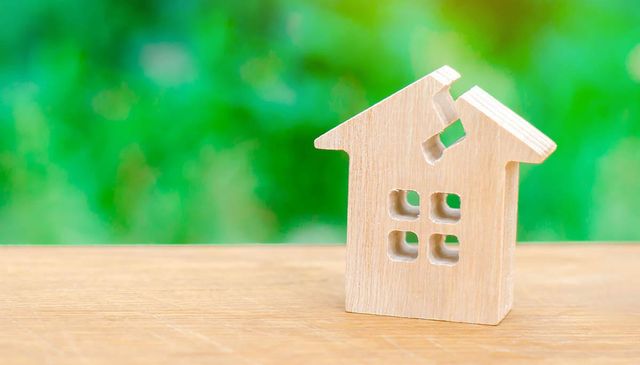5 Signs of an Unstable Foundation
A house can collapse due to poor infrastructure and an unstable foundation.
When buying or selling a house, you must look out for signs of foundational damage. It could end up costing the owner thousands of Rand to fix which could be a huge setback in the selling and buying process.
A building doesn't develop a weak foundation overnight; there is usually an underlying cause that needs to be identified and solved. These underlying causes could be due to human error, poorly drained soil, or the use of inferior foundation materials.
Here are five signs to watch out for:
#1 - Cracks in the foundation
Cracks in the foundation are never a good sign. This is usually an indication of a bigger problem.
These cracks need to be tended to immediately regardless of the size. Cracks can eventually lead to the collapsing of a building - something that could have been avoided from the start.
Cracks are usually an indication of unstable or loose soil. This causes water to weaken the foundation. Cracks can extend to other parts of the building, like the walls and the chimneys if left untreated.
#2 - Tilting chimney
A tilting chimney is definitely not an optical illusion. It could be a sign of an underlying foundation problem.
A tilting chimney usually leans to one side or creates a gap between it and the building. Most chimneys are built on a foundation separate from that of the house but it can still cause serious structural damage.
Causes of a tilting chimney include poorly drained foundation soil, loose soil, and shallow footing. A chimney expert will help with the weighting of the chimney and the correct distribution of the weight. They can assist in correcting the tilting.
#3 - Water damage
Cracks in the foundation can also be a sign of water damage. Water damage usually presents in the walls or the ceilings of a house. Homeowners might dismiss the idea of water damage when they spot cracks in the foundation but this is the worst mistake they can make.
Water damage occurs when water infiltrates the foundation, causing it to weaken. Some signs of water damage in the house include water stains, mould, stench, flooding, and rotting.
As soon as homeowners or potential home buyers spot these signs, they must act immediately. They should avoid temporary solutions and rather call professionals to avoid further water damage.
#4 - Sinking foundation
A sinking foundation can be a threat to the building as well as a threat to the lives of those living in the building.
Sinking foundations are identified as exterior cracks on the walls, leaning walls, and spaces around the windows or doors and the walls. A foundation can sink if the soil layer below it is loose.
It could also have been built on uneven soil. When you buy or sell a house, you must check the structure of the entire building. Have an expert come in for a home inspection before listing it or buying it.
#5 - Sagging floor
Buildings don't often have sagging floors. It should be a sure sign of foundational damage.
The foundation holds and supports the floor. If it is weak, the floors will be weak thus causing sagging. Sagging usually occurs from the centre, but it can extend to the corners and the sides of the floor as well.
Signs of a sagging floor also include difficulty opening and closing doors and prominent cracks in the floor. This becomes a hazard in the home and should be sorted out immediately.
Weak foundations can be detrimental to the entire structure of the house. Ensure that the foundation of a house is in good condition before buying or selling.

